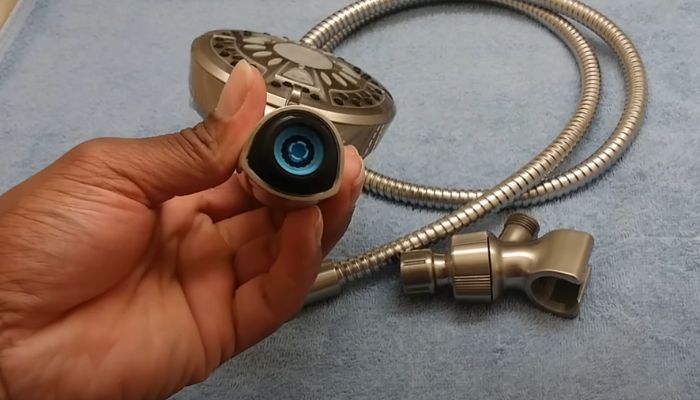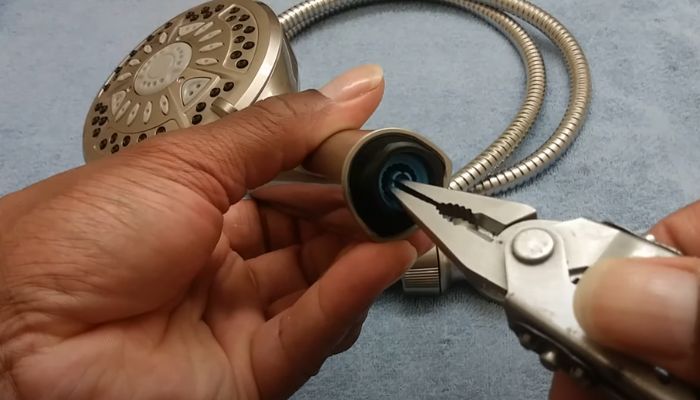What Is An Aerator In A Shower Head? A Complete Guide
Have you ever wondered how much water an individual in the States utilizes during showers alone? That has to be a sheer volume of water if you total them.
But what does that have to do with an aerator? Most importantly, what is an aerator in a shower head?
It is a device that adds air to the water as you turn on the shower. It prevents water waste, making a grand impact on water preservation all over the country. Some manufacturers incorporate an aerator into the head, while other models may require additional purchases.
There is more to the subject. Come along and have an interesting read!
What Is an Aerator in a Shower Head?
An aerator is a small device that is responsible for blending water and air as they flow out of the shower head. In general, it is made up of a mesh or screen that introduces air into the water stream.
As a result, fine bubbles are created with the mixture of water, making the user feel as if the droplets flowing out are larger than usual. This is to preserve water without affecting its pressure or flow.
Where Is an Aerator in a Shower Head Located?
Now, what is an aerator typically attached to? You may never find that thing visible to the eyes because of the assimilated design.

In faucets, aerators are commonly found at the tip of the spout, where water flows out. However, shower heads are a different story.
Most manufacturers integrate it directly into the shower head design so that it does not stand out. But you can expect the device to be inside and near the point where the water exits.
You may have to remove a screen or a faceplate to reach the aerator.
Why Do Shower Heads Have Aerators?
Before you get to the why, ask yourself, “Do aerated shower heads work?“
Yes, it is the perfect solution for a household that gets an enormous amount of utility bills due to excess water consumption.
We do not often notice the rate at which water flows since we are mostly used to the way it flows out. Nevertheless, the air and water mixed shower is more welcoming than just water falling on your face and head.
It can have that harsh effect on your skin if you continue to use the shower head without an aerator.
Besides, the manufacturers have to comply with the 2.5 GPM (Gallon per Minute) at 80 PSI (Pressure per Square Inch) standards set by the EPA (Environmental Protection Agency) in the United States.
This flow rate applies to all shower head nozzles, so yours might as well be aerated already!
How Does an Aerator Work in a Shower Head?
You already know how showers work, right? Just turn on the shower faucet, and voila! Here is a detailed version of how the aerator operates as you turn on the handle.
- It all begins the second you reach the shower faucet and turn it on.
- The water flows through the internal plumbing.
- It reaches the point where the aerator is located in the shower head.
- The mixing chamber in the aerator starts to blend water and air via the screen or mesh.
- It creates pressure to draw air into the mixing chamber, making fine water droplets and air bubbles.
- The mixture emerges from the nozzles or spray holes as an aerated water stream.
- There will be an increase in water stream volume, thanks to the air bubbles, while reducing the water amount.
- In the end, you get to enjoy an enhanced showering experience as the aerated showerhead offers more surface area contact!
Benefits of Using an Aerator in Your Shower Head
So, is aerated water better than normal water? You will probably reach a home improvement store before even finishing reading all the advantageous points below!
Replacing a Shower Head Aerator
Suppose you wish to fix a shower head that doesn’t work, along with the aerator inside. Perhaps mineral deposits and sediment have clogged both, blocking most spray holes.

It is a common occurrence, especially if the area supplies hard water.
You should know a few things before replacing an aerator and a shower head:
How to Replace an Aerator in a Shower Head
Whether it is the entire shower head or just the aerator replacement, this set of instructions can guide you all the way to the end without a professional’s help.
Step 1:
Carefully remove the shower head once you shut off the main water supply.You can also check its instruction manual if you still have it.
Mainly, ensure you follow the proper detaching method to prevent scratches. This is important if you have no intention of replacing the shower head.
You can use a pair of pliers to unscrew the part.
Step 2
Clean the shower head threads if you plan to reattach them later. You can also apply some Teflon tape or plumber’s tape to add tightness to the seal in the future.
Step 3
Now gently unscrew the old aerator using the pliers. You may have to apply a firm grip, as it will be wet. Another way to remove it is by wrapping a cloth around it and then using pliers.
Turn the tool counterclockwise and see if the device unfastens.
Step 4
Clean the threads inside the shower head of all debris and old Teflon tape (if there is any).
Ignore this point if you have a new showerhead close at hand.
Step 5
Install the new aerator on the current or new shower head (if no aerator is inside or the aerator is more than 2.5 GPM) by twisting it clockwise. If it feels loose, add Teflon tape to the threads beforehand.
Do not overtighten the device.
Now you can install the shower head, old or new, and check the water flow. Tighten the aerator more if you notice any leaks.
Aerated vs. Non-Aerated Shower Heads
The table below will help you understand why I encourage every homeowner to install an aerator.
Aerated Shower Heads | Non-Aerated Shower Heads |
It mixes air with water to achieve a voluminous spray. | It provides a stronger and harsher water flow. |
It minimizes water consumption without compromising the water pressure. | It uses more water despite decreasing the flow. |
It contributes to saving energy as well. | It has higher energy consumption. |
It improves the showering experience due to the softer water droplets. | It is more suitable for those who prefer a powerful shower. |
It offers more surface area to rinse soap and shampoo effectively. | It may require more water to wash up, making it less efficient. |
Final Thoughts
So, what is an aerator in a showerhead? I call it the big savior that helped me lessen my stress, even if it was in a small measure.
Now I can worry less about my utility bills while spending a good amount of time in the shower. It will be like emerging from a waterfall that cascades so softly that it evaporates all the worldly pressure from your shoulders.
Can you believe the impact this tiny device has on us? So, hurry up and attach one of these to your showers and sinks if you have not already.
Trust me; these are worth every penny!

